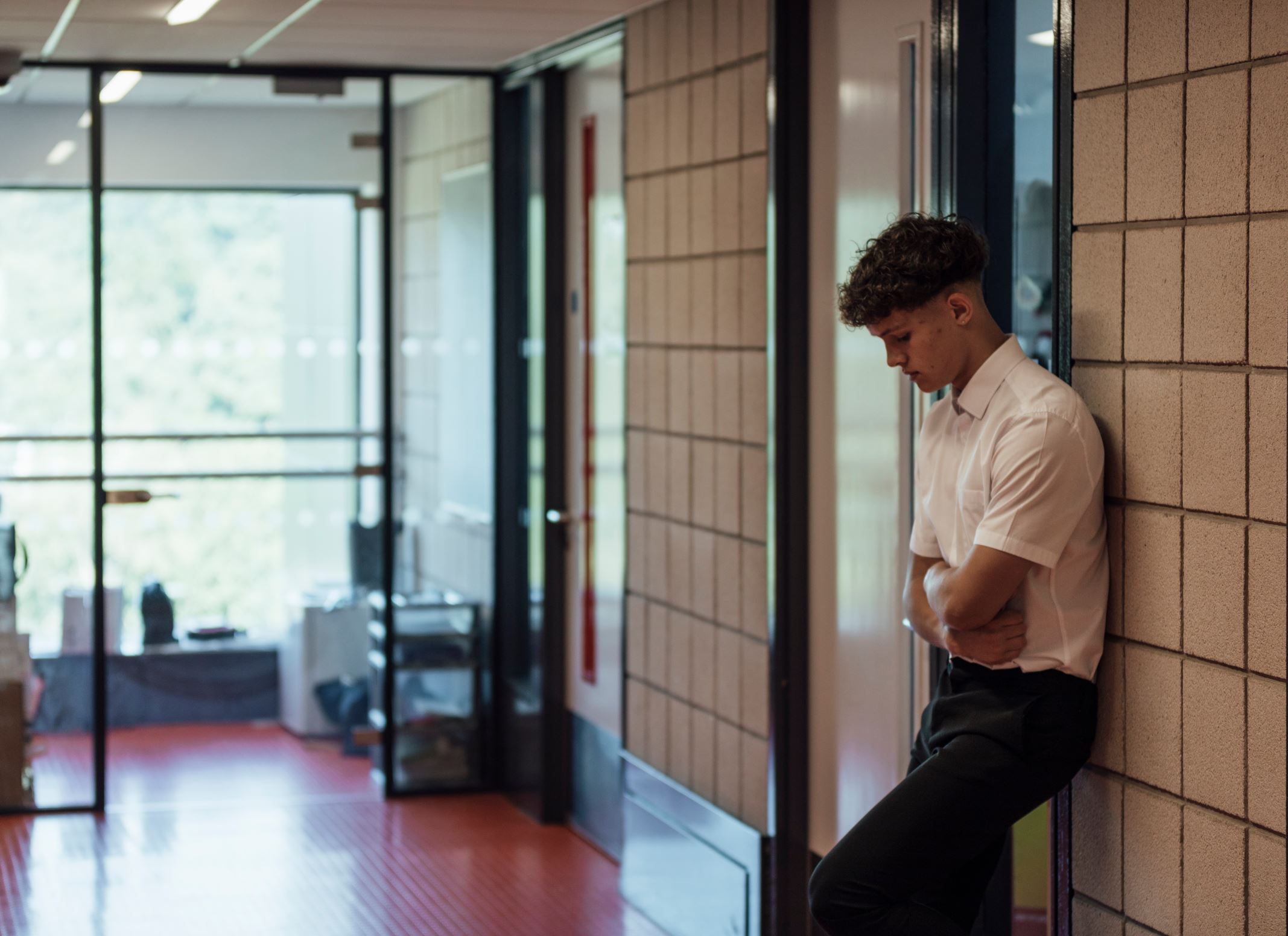Writing for The Conversation, Professor Linda Graham from Queensland University of Technology draws on the Yarra Valley case to argue schools ought to protect students who behave badly from further harm by engaging them in the restorative justice process, rather than resorting to suspensions and expulsions.
Graham, who is the director of the university’s Centre for Inclusive Education, contends an ‘educative response’ that ‘builds empathy and understanding’ in the students would have been the better approach.
She proposes the two expelled teens could have instead been given an ‘inquiry project’ where they ‘investigate similar incidents and present their findings to their peers’.
“Experts can work with students so they can learn their actions were not harmless fun with their mates, but something that hurts others,” the academic writes.
Victorian school leader and author Dr Greg Ashman tells EducationHQ that the suggestion is “breathtakingly out of touch”.
“Even the teachers who are proponents of restorative practices would never suggest something as absurd as this inquiry project, because it’s just not practical in any way,” Ashman says.
“First of all, when are they going to do that? Are we going to allocate class time to it? Is it homework task? How are we going to make sure it’s quality controlled and they don’t just hand in a load of old rubbish that they’ve done really quickly? What if they don’t hand it in? What do we do then?” he queried.
Graham also suggests the private school could ask the female students targeted to express how the incident made them feel “through their own choice of medium”.
“Those victims can also receive an apology if they want it. That apology is likely to be more meaningful if the perpetrator has learnt something of the effect of their behaviour,” she adds.
But Ashman says this could create a ‘re-traumatising’ experience for the girls involved.
“Why would we do that to them? Why are they responsible for educating the people that have done them wrong? I don’t understand that.
“And we get a lot of [this argument] in this (anti-exclusions) discourse, really.”
One of Graham’s key arguments is that research shows suspending and expelling students can detrimentally impact their lives in the long run.
“We also know there is an association between suspension and expulsion and increased delinquency, including contact with the police,” she states.
But Ashman says this point offers a great example of a key misunderstanding within the anti-exclusions lobby: the repeated confusing of correlation with causation.
He says those children who behave in ways that are likely to lead them to being suspended or expelled from school are clearly those who are also more likely to be involved with the police and justice system.
“What the anti-exclusion campaign has tried to do is imply that the exclusions from school cause the kids to get in trouble with the police.
“Like, ‘it all started when a kid got excluded from school’ … and, ‘if we didn’t exclude kids, they wouldn’t go on to develop these other behaviours’.
“It’s a classic case of confusing correlation with causation. It’s statistics 101, you shouldn’t do that…
“But of course, it’s been brought up again as the example,” Ashman says.
The school leader wants to make it clear that he is not commenting on whether or not Yarra Valley Grammar should have expelled the two Year 11 students.
“I think that the teachers on the ground, the professionals who have knowledge of all the events – not just reports of them that we’ve read in the papers – they’re the ones that are best suited to decide whether kids should be excluded or not.
“So, I don’t want to second guess them. I’m assuming they’ve made the right decision,” he clarifies.
And while there is clearly a place for restorative practices in schools, Ashman says Graham’s take is founded on a romantic idea about childhood that simply doesn’t hold up.
“The other thing that really comes across is this idea that ‘if we could only get the kids to understand the harm they’ve caused’, that would be the solution.
“And there’s several issues with that … it’s a romantic view of young people to think that if only they knew that, then they would behave – that young people are intrinsically unlike adults – like you and me, who can be mean and selfish and do things that we shouldn't do…” Ashman says.
It's problematic when restorative practices are mandated in top-down policies as the only option schools can take to deal with bad behaviour, Ashman says.
At the core of the anti-exclusions campaign is the mistaken idea that children only behave badly because they don’t understand the implications, or because they have been failed by adults in some way, Ashman added.
Sometimes, however, children are fully cognisant of what they’re doing, he notes.
“I mean, a good example is bullying. Kids bully other kids, knowing the impact it will have on them. That’s why they do it.
“So, an intervention that will help them understand the impact of their actions will give them positive reinforcement to some extent, because it’s saying, ‘look, it worked, what you did to try and upset this person worked’.
Tom Bennett, lead behaviour advisor to England’s Department for Education, subscribes to the same school of thought.
Posting on X, Bennett noted that restorative processes rely on perpetrators “accepting responsibility for their actions and b) appreciating they were wrong.
“But if the student a) doesn’t accept responsibility, or worse b) completely accepts responsibility *and approves of the impact* then the process completely fails.
“This is why we don’t reduce eg illegal parking with ‘a nice chat about why illegal parking is harmful’. We prohibit, and penalise. Big impact,” he posted.
Those who don’t have to deal with the consequences of their fanciful ideas about children and behaviour management stand to gain a lot by espousing the virtues of the anti-expulsions campaign, Ashman indicated.
"If you’re outside of school, and you’re a campaigner, you can feel very virtuous campaigning on behalf of these kids who get excluded from school, because they’re going to have worse outcomes … and it can make you feel very positive about yourself that you’re taking on the cause of these kids.
“But when that romantic ideology, that just assumes that all kids are inherently good, when that intersects with reality, you start to see the absurdities, and so teachers can’t live [within] that.”
Those sitting in scholarly ivory towers who also don’t engage with the victims of poor behaviour – and might speak only with those children excluded from schools for research purposes – never have their ideas challenged by practical realities either, Ashman concludes.
As for what other teachers think of Graham’s proposal, governments’ strict social media and media policies will effectively block public school teachers from weighing in, Ashman says.
“So we can't know what they think, really, but certainly quite a lot reacted to me posting on it – and they agree with my sentiments.
“Even teachers I would disagree with quite strongly specifically on behaviour management, I can’t imagine even those teachers really endorsing what is suggested in that article because it really is so far divorced from reality.
“But that’s just me speculating.”
Meanwhile, in an opinion piece for The Age published on Sunday, former principal Adam Voigt – an advocate of restorative practices – contended that Yarra Valley Grammar’s decision to expel the students had effectively ‘passed the buck’ onto another school.
Voigt maintains the move had absolved the school from its responsibility to “turn the young men around who have, on its watch, showed uncaring, cruel, sexist and bullying behaviour”.
The founder and CEO of Real Schools says a ‘stronger path’ for school leadership would have been to “admit that the way schools, families and communities are raising young men is failing our girls and women”.
“Stronger would have been a lengthy suspension, spent in mandatory counselling sessions and planning to take school-supported personal responsibility with every single person, especially the female students and their families, harmed by their actions….
“Stronger would have been to concede that the plethora of “respectful relationships” lessons that teachers are compelled to spend hours preparing as well as anti-bullying school days and murals about showing each other kindness and respect are no match for a culture that rescues the rich from personally making amends when they screw up,” Voigt writes.
Meanwhile, Graham states that the aim of the restorative justice process is not actually to dispense “justice”.
“It is to restore peace, to heal harms done and to prevent future harms from occurring through better understanding,” she writes.
But Ashman says a big problem emerges when restorative practices are mandated in top-down policies as the only option schools can take to deal with bad behaviour.
“If you’ve got a kid who understands exactly what they’ve done, and they have done something pretty vile, maybe to a teacher or to another student, and the system says, ‘the only thing you can do is have a restorative conversation, have a restorative practices approach, there are no other alternatives to resort to’, that’s when it becomes a problem.”
















